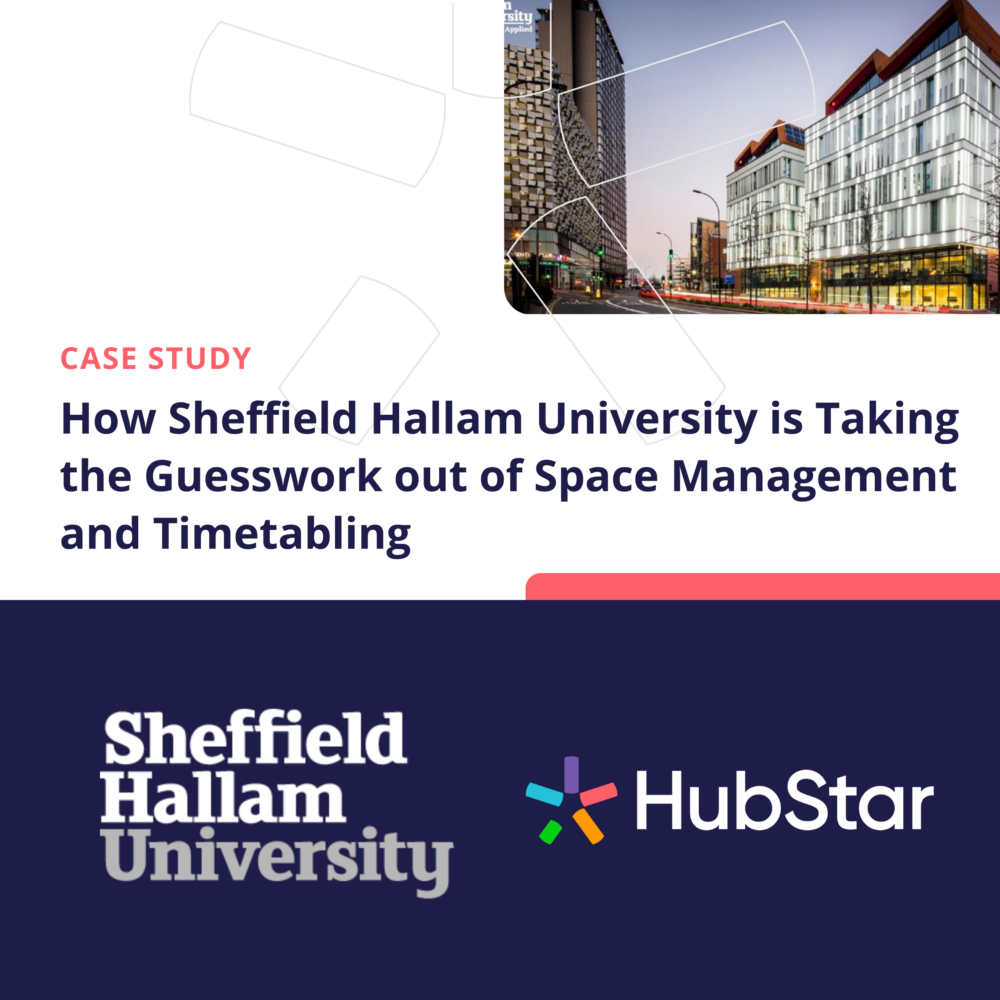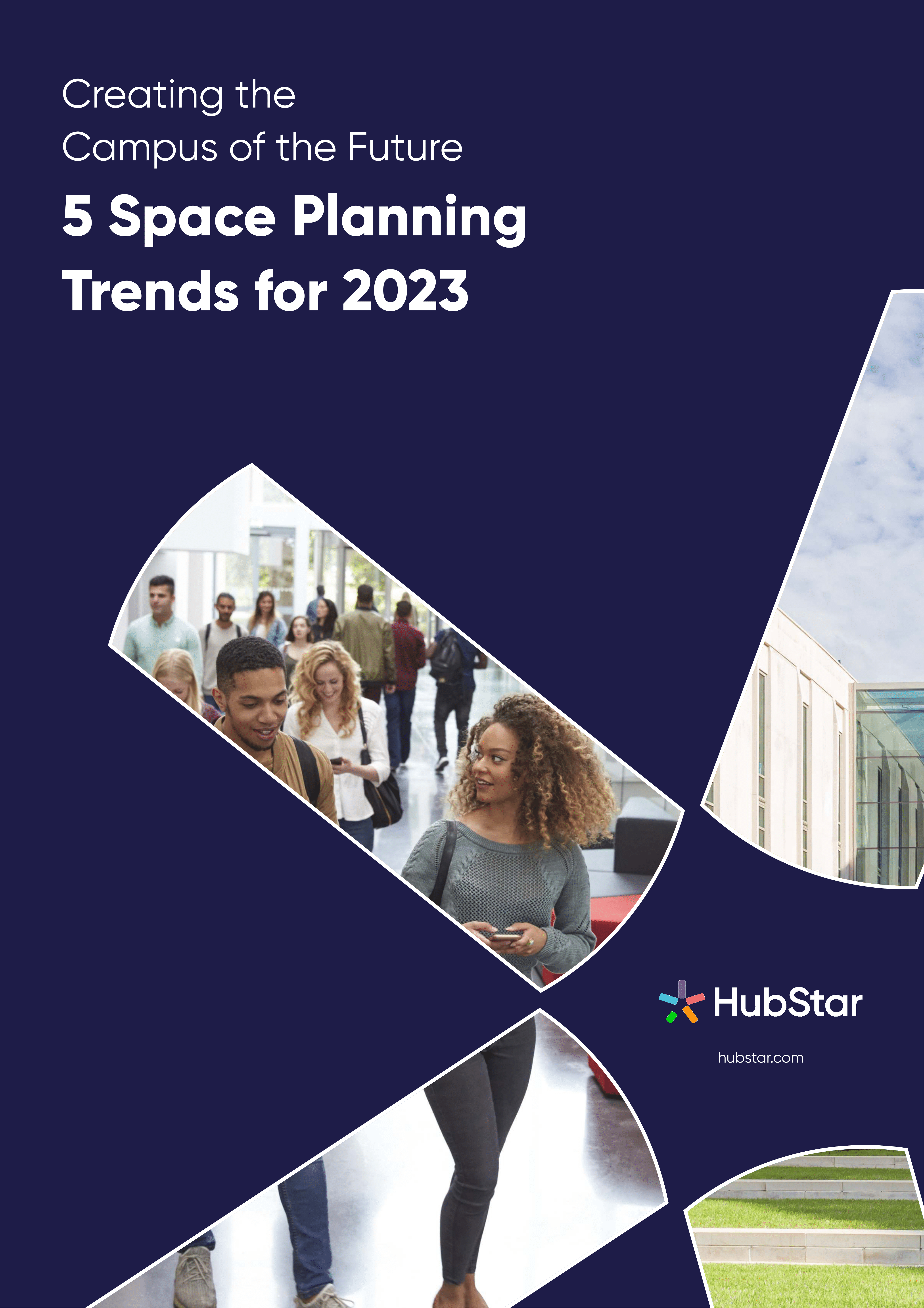5 Steps to Strategic Campus Space Planning

Contents
For many, spending time on campus has lost its lustre over the last three years. That’s left universities in a bind – how can you build a better campus if hardly anyone is using it?
In this post we’ll cover strategic campus space planning – what it is, the five steps to implementing it and examples of universities that have pulled it off through innovative campus design, layout and functionality.
What is strategic campus space planning?
Campus space planning is the analysis, optimization and allocation of on-campus spaces to best serve students, staff, faculty and the wider community.
Strategic campus space planning carries out an institution’s long term objectives and evolves dynamically with the ways students, staff and faculty want to learn, work and teach.
Through campus design, space planning guidelines and space allocation, strategic space planning proactively improves campus spaces and is built to succeed during uncertainty.
Strategic campus space planning is also data-driven. We’ll get to that later.
Why strategic campus space planning builds a better university
Amidst uncertainty, universities are having to rapidly adapt or enter an identity crisis. And since a campus is the visual manifestation of an institution’s identity, space planning is pivotal to the rapid adaptation that keeps an institution relevant.
But there’s a growing list of new normals that campuses need to adapt to, all of which strategic campus space planning can assist in resolving:
- Declining enrollment. In the US, four million fewer students enrolled in higher education in 2022 than 2012
- Unpredictable on-campus attendance.The rising cost of living, poor mental health and the availability of online lessons are all reasons students decide not to spend time on campus. But higher education is about more than making it to lectures. Since the pandemic, many students feel they’re missing out on the chance to build pivotal friendships and relationships that make higher education so memorable and worthwhile. These connections are best made in-person, but often there’s no campus spaces to make that happen
- The staff retention crisis. Over 65% of higher education employees are planning on leaving the industry entirely this year. Flexible and inspiring on-campus workspaces won’t solve everything, but they’ll certainly help
- Changing student demographics. A diverse student base that includes more disabled, ethnic minority and disadvantaged students is a strategic priority for many institutions. In the UK, the number of students identifying as disabled has increased by 45% since the 2017/2018 school year
- The student mental health crisis. 57% of UK students reported experiencing a mental health issue and 27% had a diagnosed mental health condition in a 2022 survey by Student Minds. Spaces that promote connection, social support and relaxation can provide support to struggling students
Planning out campus spaces so they address each of these challenges without sacrificing anyone’s experience requires strategic long-term thinking.
Here are five steps to strategic campus space planning for an adaptable university that provides the best possible experience for students, staff and faculty.
1) Align institutional strategic objectives with space planning guidelines.
Campus space planning is just one of the many ways that an institution’s strategic plan, mission statement and values turn the abstract into something tangible.
Campus is where people physically experience an institution’s strategic objectives instead of just reading about them on a university website page.
Campus design, architecture and spaces impact how students experience higher education and how the local community and wider public perceive the value of an institution.
If your institution’s strategic objectives aren’t translated into concrete space planning guidelines, campus spaces and overall strategy will veer off in separate directions. If space planning and university strategy aren’t on the same page from the get go, it’s very difficult to get them back on track.
Alignment with your university’s strategic objectives illuminates the goals and purposes for each campus space. It also creates a framework for measuring performance and success.
Here are a few examples of aligning strategic institutional objectives with space planning guidelines:
- Equality, diversity and inclusion – an accessibility framework that’s applied to all existing campus spaces and new projects
- An excellent academic experience – classrooms and learning spaces that are learner-centric, flexible, promote connection and integrate with technology
- A culture of innovation – departmental requests for spaces that promote cross-departmental collaboration, creativity and brainstorming are given priority
- Prioritizing student health and wellbeing – campus design that facilitates connection, comfort and relaxation, with exposure to green spaces
2) Measure space utilization patterns and trends.
Aligning space planning guidelines with strategic objectives creates a roadmap for where campus space planning should be going.
Measuring university space utilization shows space planners how to get there.
Without understanding how spaces are being used in the present, it’s impossible to set measurable, attainable goals and predict how space will be used in the future. That’s why patterns and trends are key here rather than just measuring for the sake of it.
The most common ways to measure space utilisation are manual audits and walkthroughs.
However, neither are sufficient, because they capture space utilization at one moment in time. If a campus is designed and optimized around a singular data point, it’s going to be obsolete from the start.
That’s because the ways people – especially students – use campus spaces is volatile.
While some universities are seeing a sudden influx of students desperate to get back to in-person learning, others have frustrated professors staring out at empty lecture halls for the third time in a week.
Utilization patterns and trends can help university space planners predict how many and what types of spaces they’ll need in the future. And when implemented, they’ll be relevant and proactively meeting demand.
The catch here is that space utilization needs to be monitored continuously to identify the stories coming up in the data.
Here are a some patterns and trends to keep an eye out for as the days, weeks and semesters go by:
Classrooms: Classes that consistently end earlier or later than the allotted time, are mostly empty or don’t turn up at all.
Libraries, lounges and communal spaces: Higher utilization of collaborative versus individual spaces and areas that are consistently empty or close to capacity.
Staff workspaces: Meeting rooms, cubicles and individual workstation areas with low utilization rates.
Pinpointing these patterns and trends also uncovers opportunities for repurposing underused spaces.
That massive lecture hall that’s a ghost town these days? Measuring space utilization is how a sneaking suspicion becomes a proven fact that solves the problem. Armed with data, the lecture halls could be modularized into smaller learning spaces.

How to Build a Better Campus with University Space Utilization Data
3) Set measurable goals for campus space planning.
Without measurable goals, campus space planning isn’t strategic – it’s just a rough plan.
While some outcomes of strategic space planning are difficult to quantify – for example, innovative ideas generated on campus, a better student experience or institutional prestige – there’s a lot that is quantifiable.
For starters, let’s break space planning goals down into three areas:
Overall campus estate: Downsizing the campus estate is a goal for many universities looking to reduce costs, boost sustainability and make spaces more efficient. This is an objective for the University of Missouri, which aims to reduce total campus estate by one million square feet by 2024.
Repurposing and optimizing existing space: Goals here could be the total number of refurbishment and renovation projects over the next five years or increasing on-campus course offerings.
Space utilization: Increasing utilization rate in collaboration spaces by 20% or an upwards trend in utilization rate over the academic year could both be goals in this area.
Clearly defined goals help to create a framework for deciding which campus design projects should take priority, as well as how space should be allocated.
4) Decide how and when to optimize space.
This step is particularly important for spotting opportunities to make building operations more sustainable, which lends a hand to reducing carbon emissions and achieving net zero status.
Higher education is in such a constant state of flux that campus space optimization should be a continuous process.
But with limited time, resources and only so many hours in a day that can be spent on AutoCAD drawings, space planners need a process for deciding how to make the best possible use of space and when to look for opportunities.
This will usually involve a hefty amount of cross-departmental collaboration.
If all the stakeholder teams involved in shaping camping spaces – space planning, timetabling, curriculum delivery, facilities maintenance and real estate – are siloed, then the optimization process won’t be easy.
Data can be a big help for breaking down silos and starting cross-departmental conversations.
If space utilization data shows that a course has been allocated a lecture hall that’s too big for the number of students that turn up, space planners can share this data with timetablers. Timetablers can then approach faculty members to find a more efficient learning space or find new ways to deliver lessons.

The Top 2 Problems with Timetabling and How to Fix Them
Similarly, if data shows a specific floor has been underutilized for most of the semester, space planners can share data with FM teams to scale back services on that floor, reducing costs and energy consumption.
Pro-tip: real-time space utilization data shows which spaces to optimize at the right times based on campus behaviors and attendance.
5) Turn campus space planning into an infinity loop.
It’s everyone’s favorite step – the good old rinse and repeat.
Successfully executing a strategy means constantly revisiting all the steps until there’s compelling evidence the approach is no longer working.
Rapid change means a steep learning curve. For decades, the way people used campus was reassuringly predictable – course attendance peaking for the first few weeks of the semester, libraries crammed to capacity during exam period, and so on.
Attendance and course demand is now anyone’s guess. That makes effectively managing and planning the right types of spaces a guessing game too – without a strategic and data-driven approach, that is.
The kinds of spaces that deliver the best learning and working outcomes while supporting student wellbeing could be completely different for each institution. That’s why revisiting each of the previous four steps – even at the same time – is paramount.
How Sheffield Hallam University Uses Space Utilization to Build a Better Campus
Find out how Sheffield Hallam University is using Hubstar’s space utilization solution to bring clarity to campus space management and timetabling in this interview with Donna Porter, Senior Space Manager.
Examples of strategic campus space planning:
Arizona State University’s’ new Media and Immersive eXperience Center is a partnership between ASU and the City of Mesa that connects the University with the wider community. A 100 foot screen on the building’s exterior provides a space for movie screenings and events open to the public, while connection spaces provide support for entrepreneurs.
MIT’s ongoing redesign of the Stratton Student Center aims to strategically improve and upgrade the building’s infrastructure and repurpose spaces to focus on student wellbeing. With input from students, the renovated building will include a wellbeing lab, a flexible lounge and more spaces for students to connect, relax and recharge.
The National University of Singapore has long been recognized for its sustainable campus design. A key tenet of achieving carbon neutrality is using passive campus design principles to reduce use of energy. As part of this, the University’s Yusof Ishak House, originally built in the 1970s as a space for student connection, will be the first retrofitted net zero building that’s self-sufficient in supplying its own energy through increasing natural ventilation and lightning.
5 Campus Space Planning Trends for 2023
Download to find out:
- How the campus of the future will fulfil strategic institutional objectives and solve higher education’s most pressing challenges
- Which five trends space planners are using in 2023
- How to implement them at your institution






